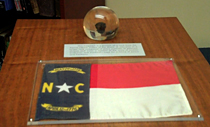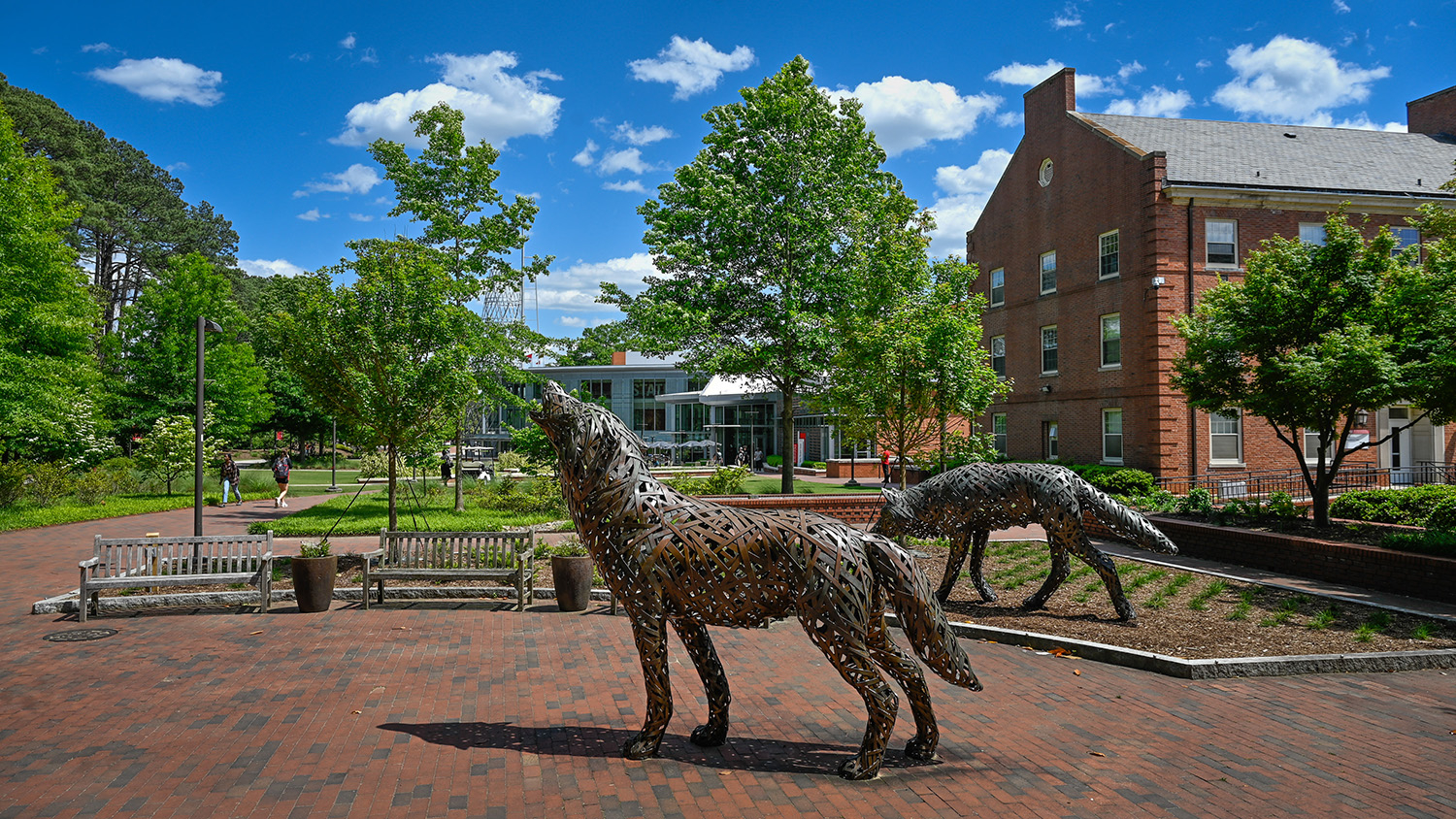Moon Rock Mystery
Chris Brown wears a lot of hats at NC State. He’s an associate vice chancellor for research development, a professor of plant biology and the director of N.C. Space Grant.
And although it wouldn’t fit on his business card, he was also the unofficial “keeper of cool Apollo 17 artifacts” until July 27.
Those artifacts—a fragment of moon rock collected during the Apollo 17 lunar mission in December 1972, as well as a framed state flag, mission patch, and note to then-Gov. James Holshouser and the citizens of North Carolina signed by the Apollo 17 crew—are now safely ensconced at the N.C. Museum of Natural Sciences, where they await the completion of a new building and an exhibit that will share them with the world.
There’s mystery attached to these North Carolina artifacts and to the approximately 185 “cousin” goodwill Apollo 17 artifacts circulating across the world. By some estimates, the whereabouts of less than one half of these treasures are known.

Get a Piece of the Rock
In 1973, President Nixon sent, as a goodwill gesture, moon rocks and other Apollo mission artifacts to all 50 U.S. state governors and about 135 foreign countries. Brown isn’t certain what happened to the artifacts during their first 30 years in North Carolina.
But he became involved in 2003 when Dr. John Hardin, then deputy director and policy analyst—and now executive director—of the N.C. Board of Science and Technology, found the artifacts in a desk drawer in a government building downtown. Hardin gave Brown the artifacts so Brown could share them with others in his role as director of the N.C. Space Grant program.
Brown shared the artifacts with hundreds of students, teachers and members of the public over the past seven years. But when he was named to an advisory board for the Nature Science Center, a new wing of the N.C. Museum of Natural Sciences scheduled for completion in 2011, Brown says he agreed to turn the Apollo artifacts over to the museum when the new wing opens to “educate and inspire future generations of explorers.”
Sooner Rather Than Later
Recently, the goodwill Apollo artifacts and their whereabouts have caused a stir. As a class project, students at the University of Phoenix contacted entities that received the artifacts in 1973 and inquired about the status of the artifacts.
The results were somewhat troubling. Many of the artifacts seem to be missing in action, perhaps collecting dust in desk drawers. Some were stolen. One was reported to be among the auctioned items of a feared dictator. A website called CollectSpace has a running list of the whereabouts of the Apollo 17 moon artifacts.
Perhaps in connection with the University of Phoenix project, North Carolina’s Governor’s Office recently received an inquiry about North Carolina’s Apollo artifacts. Governor’s office staff asked the Museum of Natural Sciences personnel for any information about the artifacts.
In light of the inquiry, Brown and museum geology curator Dr. Chris Tacker decided to expedite the transfer timeline. So, with artifacts in tow and letters of transfer signed, Brown officially parted with the sought-after artifacts on an overcast Tuesday morning as museum attendees flitted past, blissfully unaware of the treasures changing hands.
While he won’t have the artifacts to wow students, Brown is pleased that they have a new home. “Each day, thousands of North Carolinians will have the opportunity to view these invaluable artifacts” when they go on display next year, he says.
See the moon rock handoff
- Categories:


